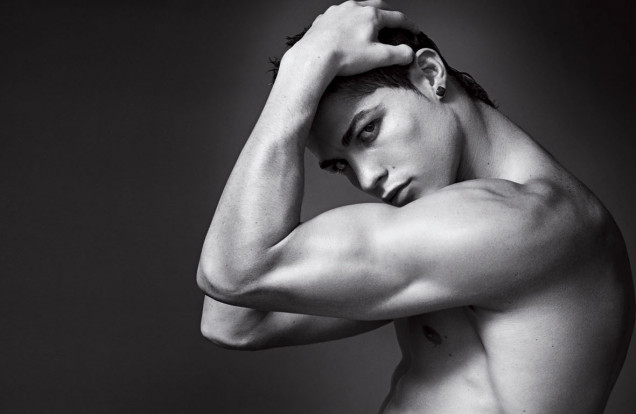Hottest Actor Breakouts
Movie roles that made stars famous overnight

Brad Pitt in Thelma & Louise (1991)
He appeared out of nowhere, on the side of the road, as a lanky baby-faced vagabond with a white hat and a whiter smile looking for a ride. Like his character, he was a young unknown from the middle of nowhere named Brad Pitt and his charm was undeniable. Soon after introducing himself, Thelma, Louise, and every producer in town was dying to pick him up.
Sean Connery in Dr. No (1962)
Legend has it that Bond author Ian Fleming didn’t originally support the casting of a tall, muscular, working-class Scot—or in his words, “an overgrown stuntman”—named Sean Connery to play the Savile Row–Oxbridge type he’d always pictured. History and the box office proved him wrong, however. And Sean Connery went on to epitomize the class, charm and unfettered sexuality for which Bond is now known.
Ryan Gosling in The Notebook (2004)
Years before he became the intense, seductive hunk he is today, Gosling was just a former Mouseketeer looking to make the treacherous leap from child actor to leading man. The Notebook bridged that divide and proved to Hollywood that he could be a draw to at least half of the human population—along with their reluctant boyfriends.
Denzel Washington in Glory (1989)
He had done years of TV and played the cerebral South African activist Steve Biko in Cry Freedom, earning an Oscar nomination to boot, but it wasn’t until he did Glory, charging headlong into the role of escaped slave turned soldier, Silas Trip, fiercely proud and far more worldly than his white superiors, that Denzel became Denzel—an Oscar winner, not just nominee, with a smile and stare that would make women wobbly.
Mickey Rourke in Body Heat (1981)
While it has been hard to track the arc of Rourke’s long career, with all its parabolic swings, we could say with certainty that when he showed up as Teddy Lewis, the shady, sweet-faced, scene-stealing arsonist, in this classic neo-noir, he would be a talent to reckon with.
Marlon Brando in A Streetcar Named Desire (1951)
It was, arguably, the most historic breakout in cinema history: the otherwise unknown Brando, having electrified Broadway as the brutish, erotically raw Stanley Kowalski onstage, reprised the role (under the watchful eye of director Elia Kazan) onscreen. He was eminently subtle enough for the camera, but when he ripped his T-shirt and the iconic cries of “Stella!” came roaring down on at audiences, it was clear that not only a new star was born, but a whole new kind of acting and generation of antiheroes was launched as well.
John Travolta in Saturday Night Fever (1977)
It was only a matter of time before the skinny, blue-eyed triple-threat from New Jersey grooved his way out of Mr. Kotter’s class and into movie legend as Tony Manero, the preening, strutting and boogieing blue-collar Brooklyn man-child who would crown the disco era. If that wasn’t enough, Travolta went on to spearhead a ’50s revival in Grease a year later.
Harrison Ford in Star Wars Episode IV: A New Hope (1977)
Unlike some of the meteoric breakouts on this list, Ford had been “hanging around” for years in Hollywood as a full-time carpenter who sporadically acted. But when George Lucas, who’d cast Ford in a small role in American Graffiti, asked him to read Han Solo’s lines during other actors’ auditions, he became so taken with Ford’s devil-may-care delivery that he simply gave him the part. And, well, you all know the rest.
Robert De Niro in Mean Streets (1973)
He had done a couple of ragtag comedies with Brian De Palma and the baseball weepie Bang the Drum Slowly, but when fellow Manhattanite and Italian-American Martin Scorsese joined forces with De Niro to direct this low-budget drama about small-time hoods in Little Italy, a magical collaboration was ignited. As Johnny Boy, De Niro got critical raves, and with this powder-keg of a film, Scorsese had boosted both of their careers, and Harvey Keitel’s as well.
Al Pacino in The Godfather (1972)
There is an ironic sort of poetry to the fact that Pacino’s rise to stardom was sparked by the most magnificent portrait of moral decay ever captured on film. With each onscreen step down the ladder to moral turpitude, Pacino further cemented his position as a prince of the New Hollywood of the ’70s.
Samuel L. Jackson in Pulp Fiction (1994)
Jumping from bit part to bit part, character actor Samuel L. Jackson finally stuck the landing in Tarantino’s magnum opus as Jules, the fast-talking, Jheri curl–wearing hit man in search of a heart. Thanks to Jules, Samuel L. will always be the most eloquent and baddest mofo in any cinema universe he inhabits.
Dustin Hoffman in The Graduate (1967)
When Mike Nichols auditioned the short, Jewish-looking, 30-year-old, nasal-voiced Hoffman for the part of alienated college grad Benjamin Braddock, it was his very awkwardness that sold him. The Graduate was a massive, generation-gap-defining hit, and the unknown Hoffman’s scenes with Anne Bancroft (only 6 years his senior) as Mrs. Robinson became instant classics.


